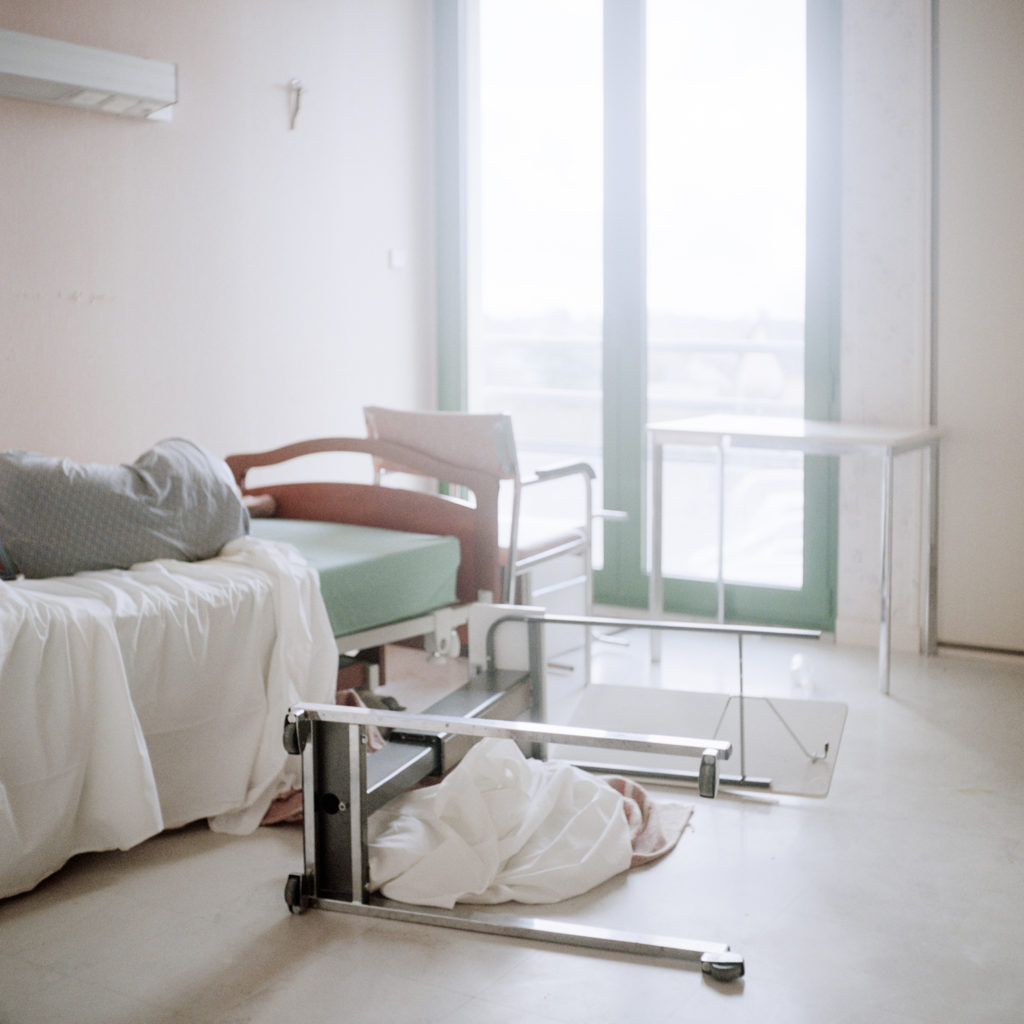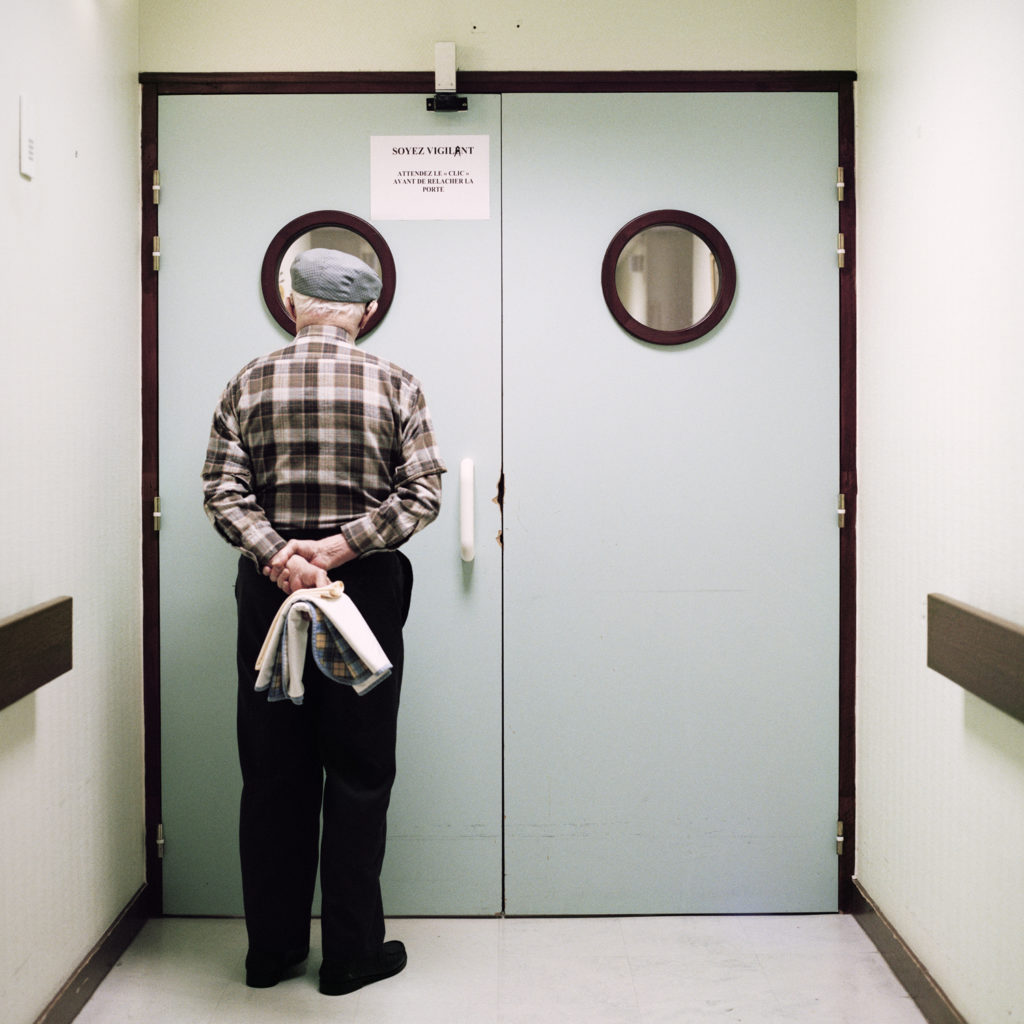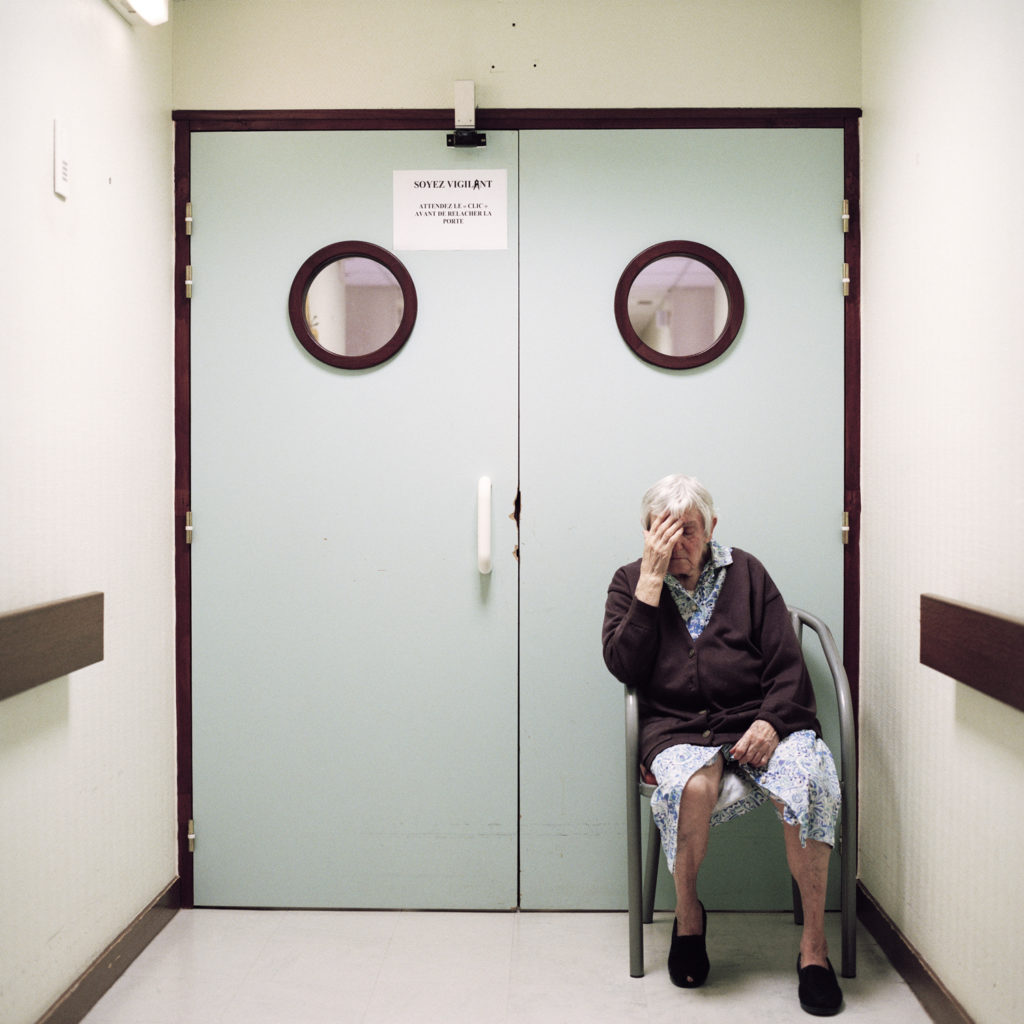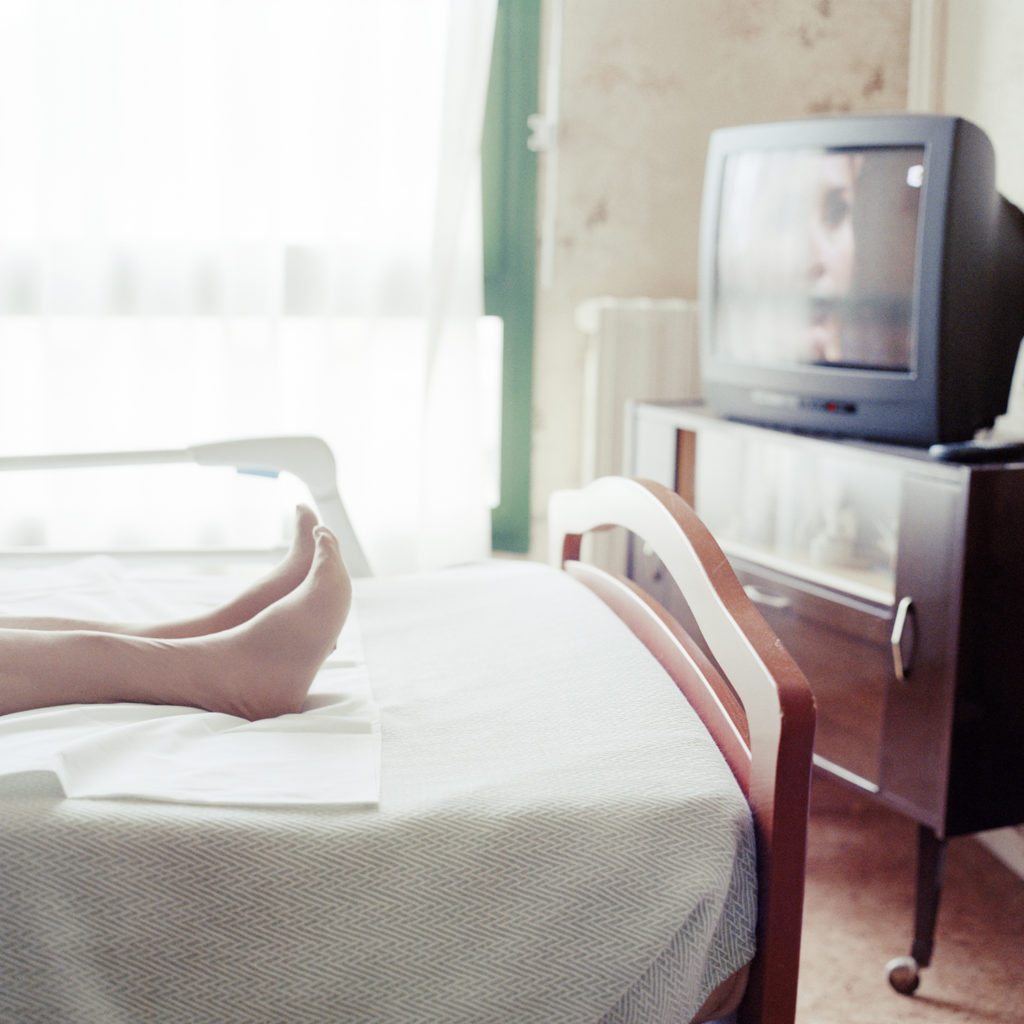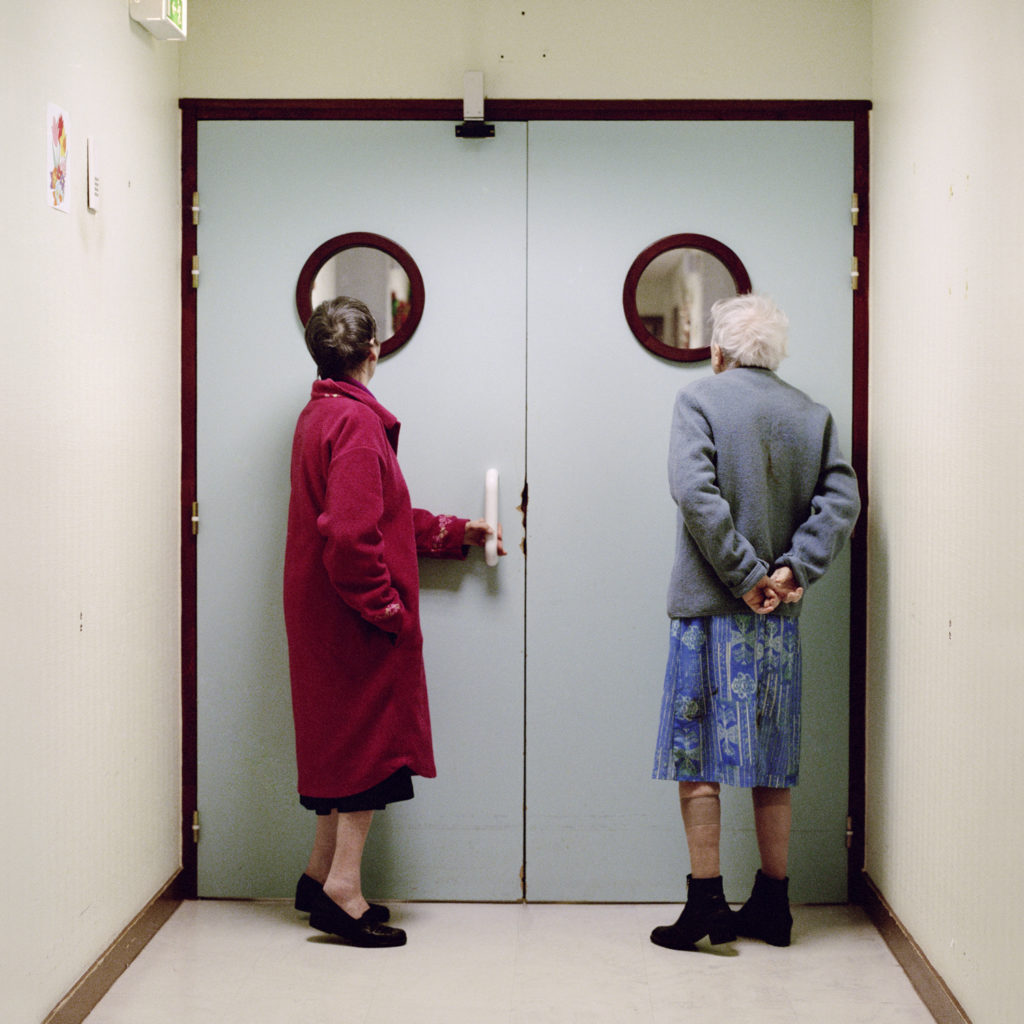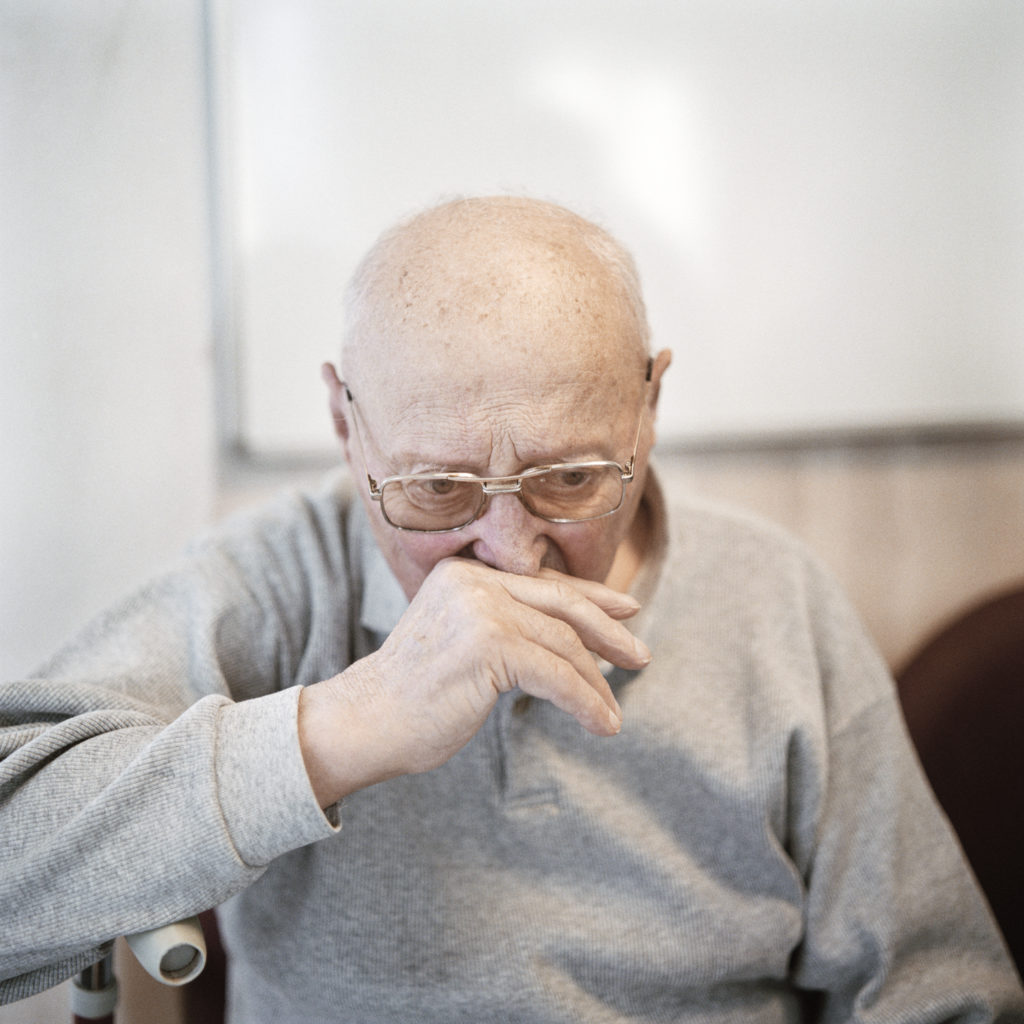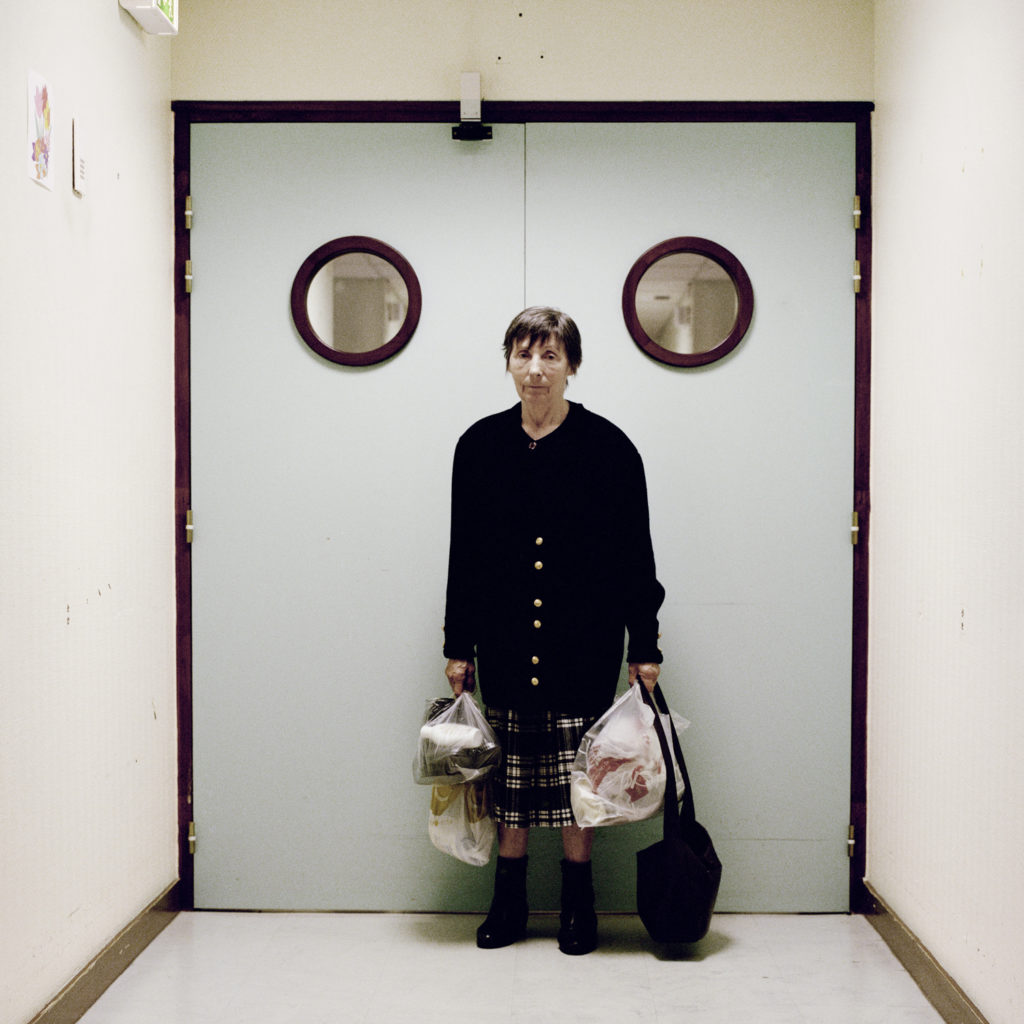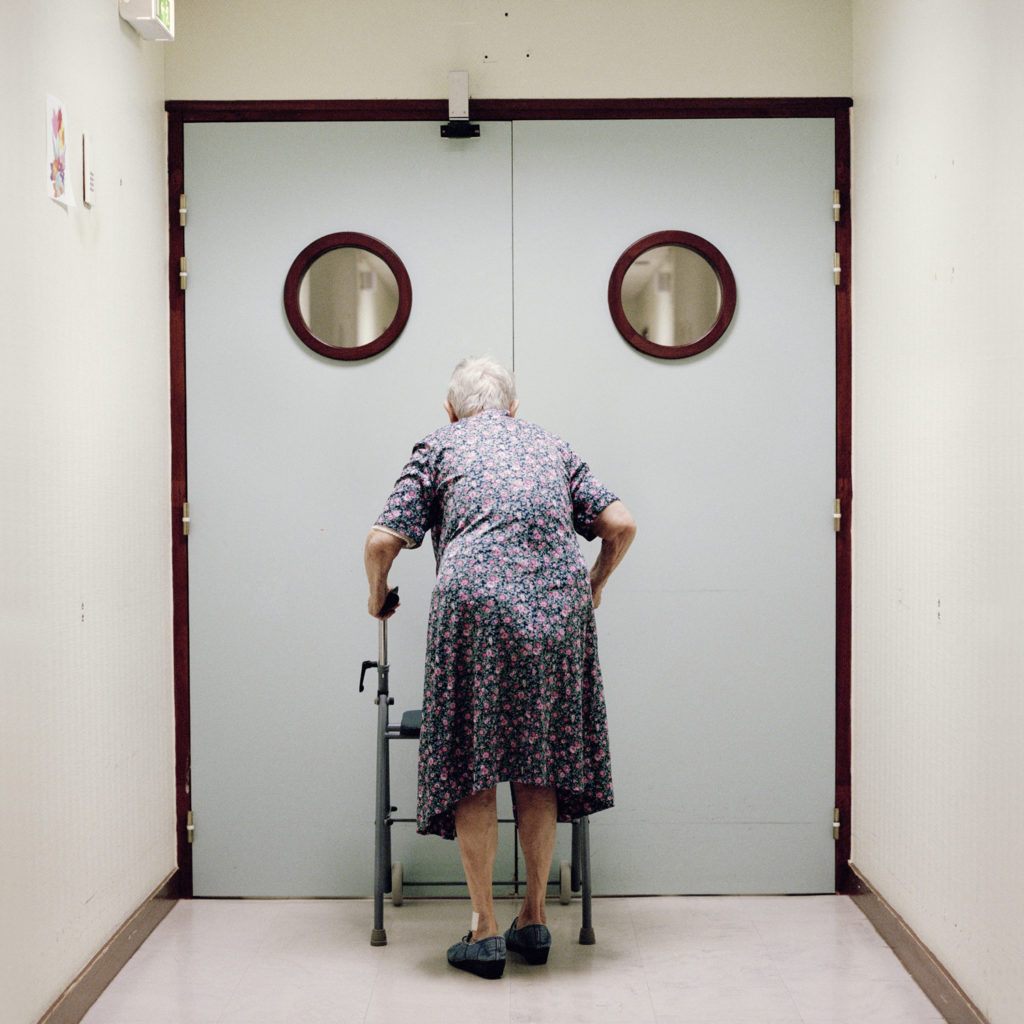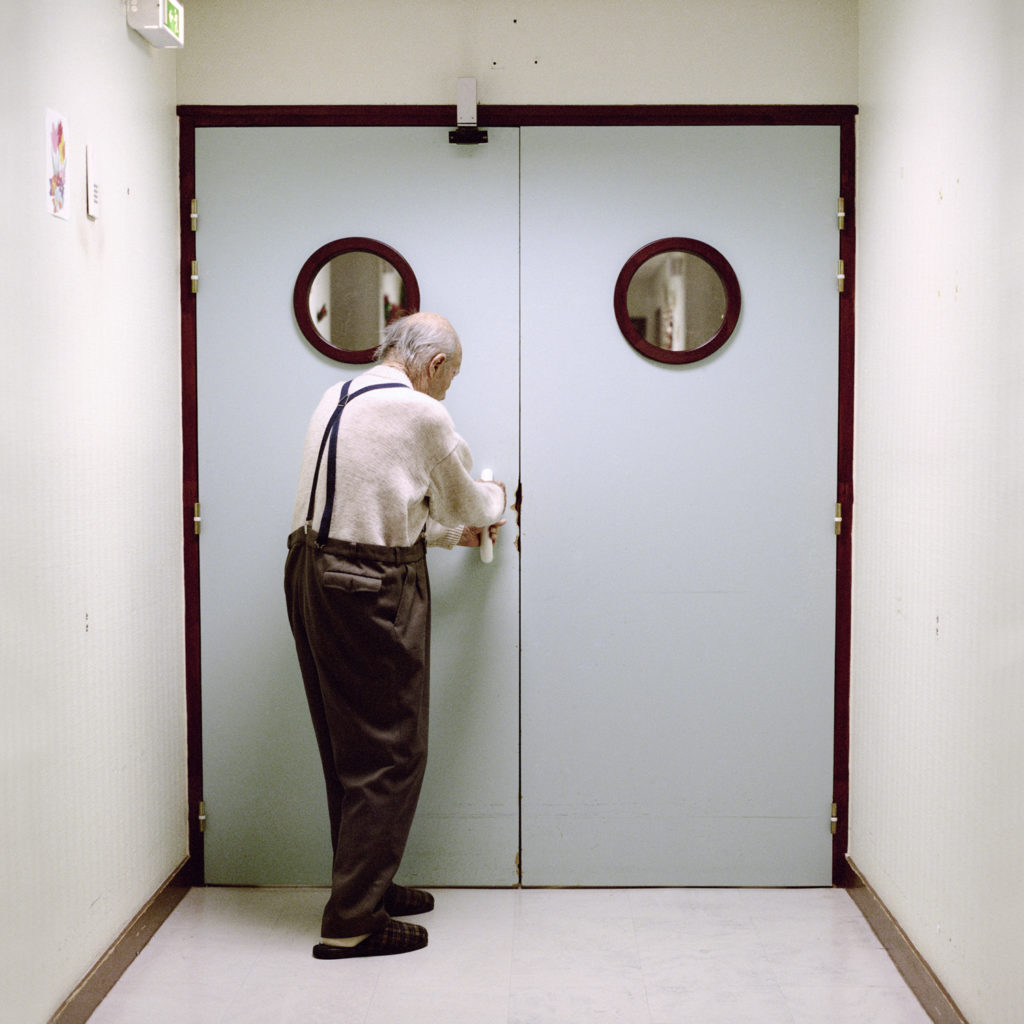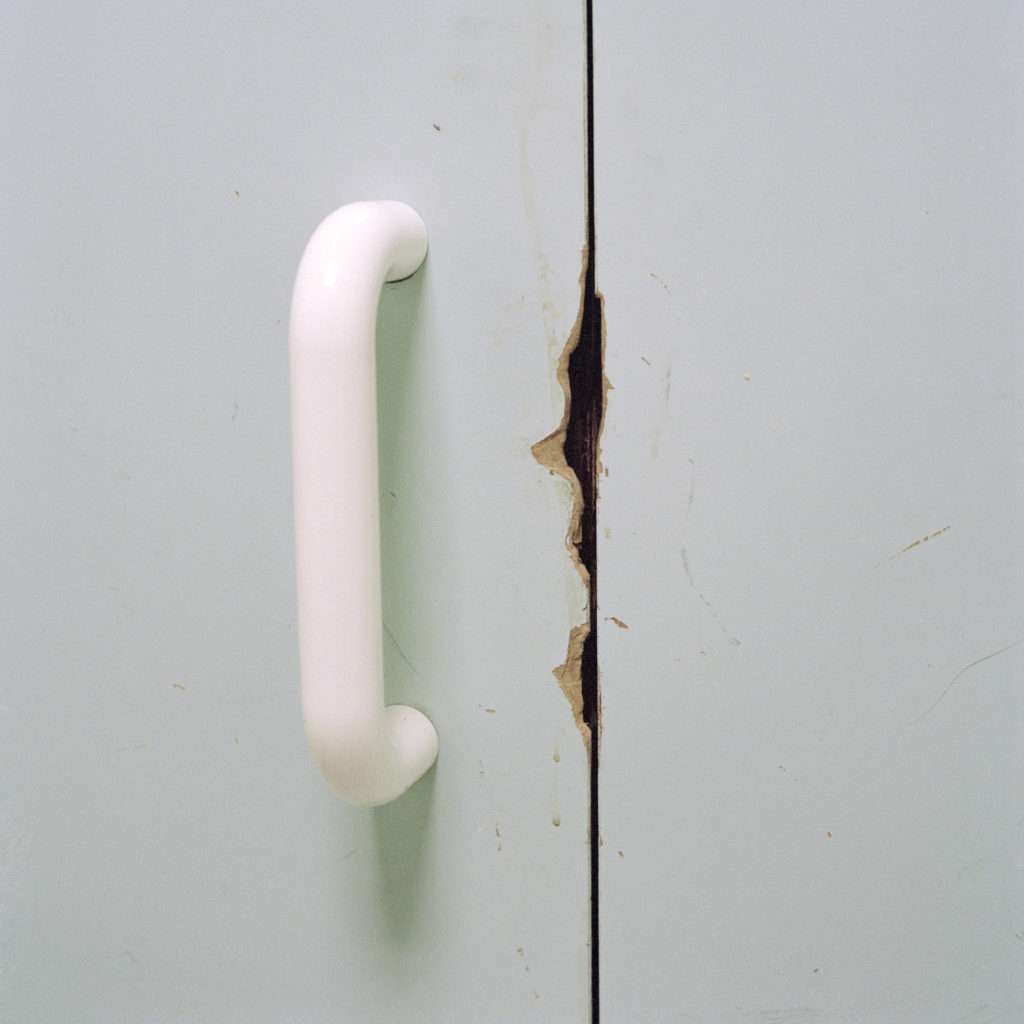In moments when residents experience a strong urge to go home, they might find themselves at the locked door at the edge of a ward caring for those with Alzheimer’s disease. One such ward is located in a geriatric hospital outside of Paris, and the emotions of those residents are captured in Maja Daniels photo series ‘Into Oblivion.’
Maja spent weeks of her life living in the hospital between the years of 2007 and 2010 engaging with, visiting and taking photos for the series. Once complete, Maja discussed her photos with staff and the related families. For the staff members, the photographs allowed them to acknowledge the locked door as more than a necessity. Maja describes staff members as being choked up by the photos of residents in front of the door. “They had never contemplated its symbolic value,” she said. And for the families: “The photographs allowed me to show them life within the institution from a different perspective and this lead to interesting feedback from the carers on their own practices.”
For Maja, the series is meant to spur discussions like this one. She said she hopes that the series will help people to think about health care policies in a new way.
Though she has no personal connection to Alzheimer’s disease, Maja experienced many of those moments common to those who have Alzheimer’s in her time taking the photos.
“I came to realize the stark contrast between the intense moments when staffs were present and the longer periods when residents were alone. I have tried to convey that feeling — a sense of fading, of not knowing if time went by fast, or might have even stopped and stood still — in my photographs,” she described.
Bearing witness to these times weighed on Maja.
“As I witnessed residents going through this emotional turmoil, I felt it all as well,” she said. “I wanted to portray each resident and the situation they found themselves in a dignified way but I felt uncomfortable at times and I did sometimes question my presence. I spent a lot of time not taking pictures, just spending time in the ward just like any volunteer.”
This time made a lasting impression on the artist. She says she often thinks of the residents and maintains contact with the family members she came to know.
Her study of sociology, which occurred concurrently to the project, aided her work in this piece and others. In fact, the opportunity to work with the hospital came when its director reached out to local visual artists through Maja’s school. It was on her first visit to the institution that the protected unit captured her attention, via two residents peaking through the two glass windows of the blocked door.
Maja says, in general, she uses photography as a way to engage with and understand the society in which she lives. “I keep coming back to questions related to the limitations of the body and how we, both as individuals and as a society, negotiate this conflict.” Her body of work also documents a set of age-defying twins Mady and Monette and a friendship between a 20-year-old Afghan and an 87-year-old Swedish woman living in a rural Swedish town. The latter was part of an interdisciplinary project called Ageing Democracies? Political Participation and Cultural Values among the Elderly in Europe. Her portfolio can be viewed at http://majadaniels.com/.

